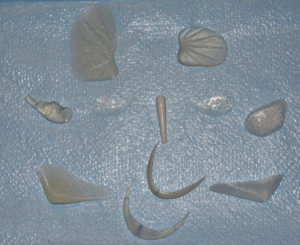
Good quality and quantity of soft tissue around a facial implant is the most critical factor in their long-term success, usually far more important than the implant’s chemical composition. Soft tissue coverage over an implant should be as thick as possible. Those facial implants that are more deeply placed (i.e., next to the bone) rarely implant-related problems such as infection, exposure or extrusion. Implants placed immediately under the skin or in areas of the face where the tissues are thin with little muscle or fat have a much higher incidence of postoperative complications.
Another important principle of facial implant use is that antibiotics should be given during the surgery.The reason for antibiotic use is to prevent or eliminate any bacterial sticking to the implant during its insertion. And those few that might will then be killed. Most plastic surgeons will also wash or soak the implant in antibiotics prior to its insertion. They may be some patients, or surgeons for that matter, who may be concerned about the overusage of antibiotics. But the risk of developing an infection, and losing the whole reason the surgery is being performed, isn’t worth it.
Dr. Barry Eppley
Indianapolis, Indiana


